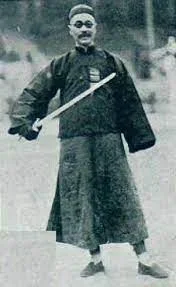Historically, tassels did exist, in the same design for both Jian and Dao, which is strange that what is currently passed on between the two is very different between them. However, the historical tassel bears little resemblance to what is currently sold/displayed on swords today.
It was also a useful addition to a blade. Here's a picture of what I mean: http://thomaschen.freewebspace.com/
The use of the Chinese tassel was that same as that of European cavalry sabers. It looped around the wrist in battle, so if your blade was knocked out of your hand for whatever reason, you didn't lose your sword. It dropped and dangled until you could recover it. I'm sure that people would have trained skills to flick it back into their hand, but it wouldn't have been regimented.
The big tassels that are so very common these days on Jian and the brightly coloured cloth on Dao are from the Chinese Opera and gradually took over.
In modern practice is there a need for a tassel of this type? Probably not unless physics suddenly breaks down and guns stop working, because even if you are interested in restoring Chinese swordsmanship and sparring with real weight weapons, it's unlikely that you are going to be charging around on horseback with a live blade shopping at people and risk dropping your blade.
Although I have seen clips on youtube that are remarkably similar.
It was also a useful addition to a blade. Here's a picture of what I mean: http://thomaschen.freewebspace.com/
The use of the Chinese tassel was that same as that of European cavalry sabers. It looped around the wrist in battle, so if your blade was knocked out of your hand for whatever reason, you didn't lose your sword. It dropped and dangled until you could recover it. I'm sure that people would have trained skills to flick it back into their hand, but it wouldn't have been regimented.
The big tassels that are so very common these days on Jian and the brightly coloured cloth on Dao are from the Chinese Opera and gradually took over.
In modern practice is there a need for a tassel of this type? Probably not unless physics suddenly breaks down and guns stop working, because even if you are interested in restoring Chinese swordsmanship and sparring with real weight weapons, it's unlikely that you are going to be charging around on horseback with a live blade shopping at people and risk dropping your blade.
Although I have seen clips on youtube that are remarkably similar.

